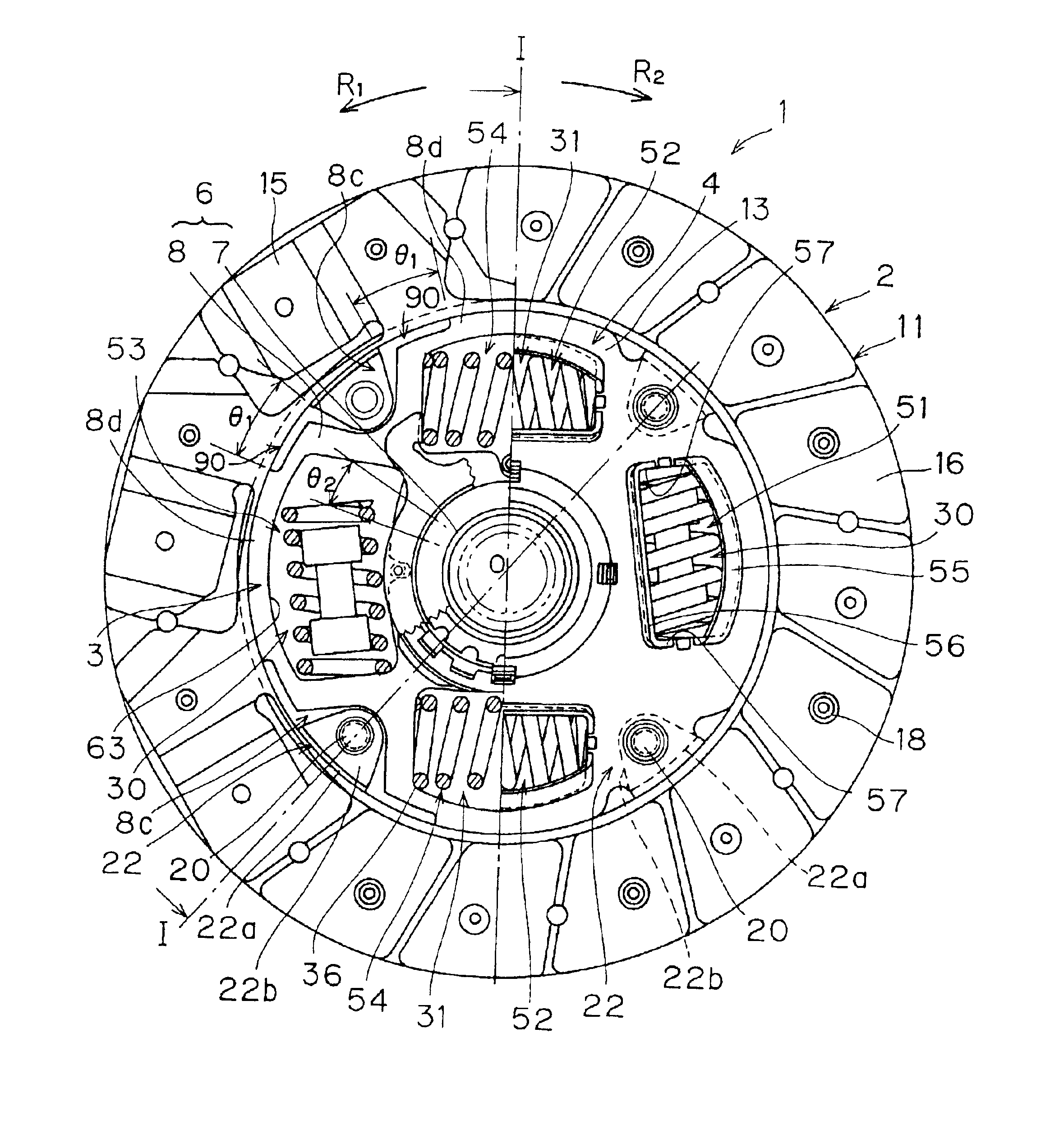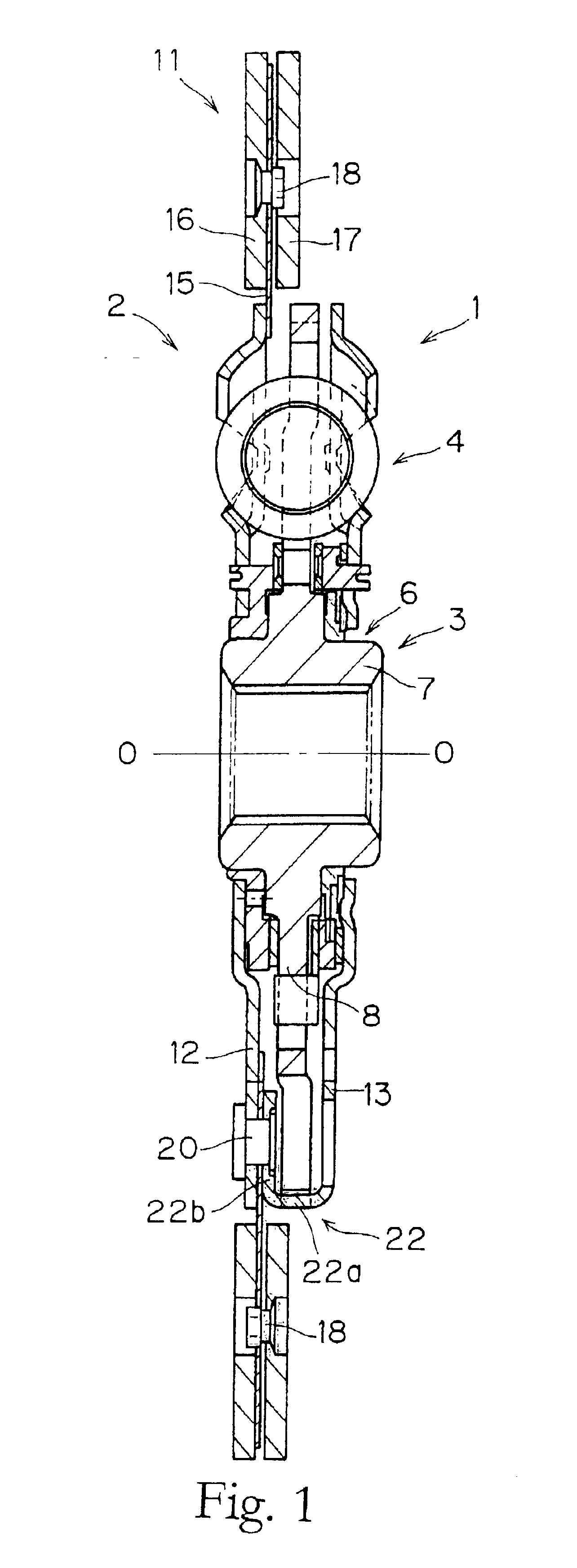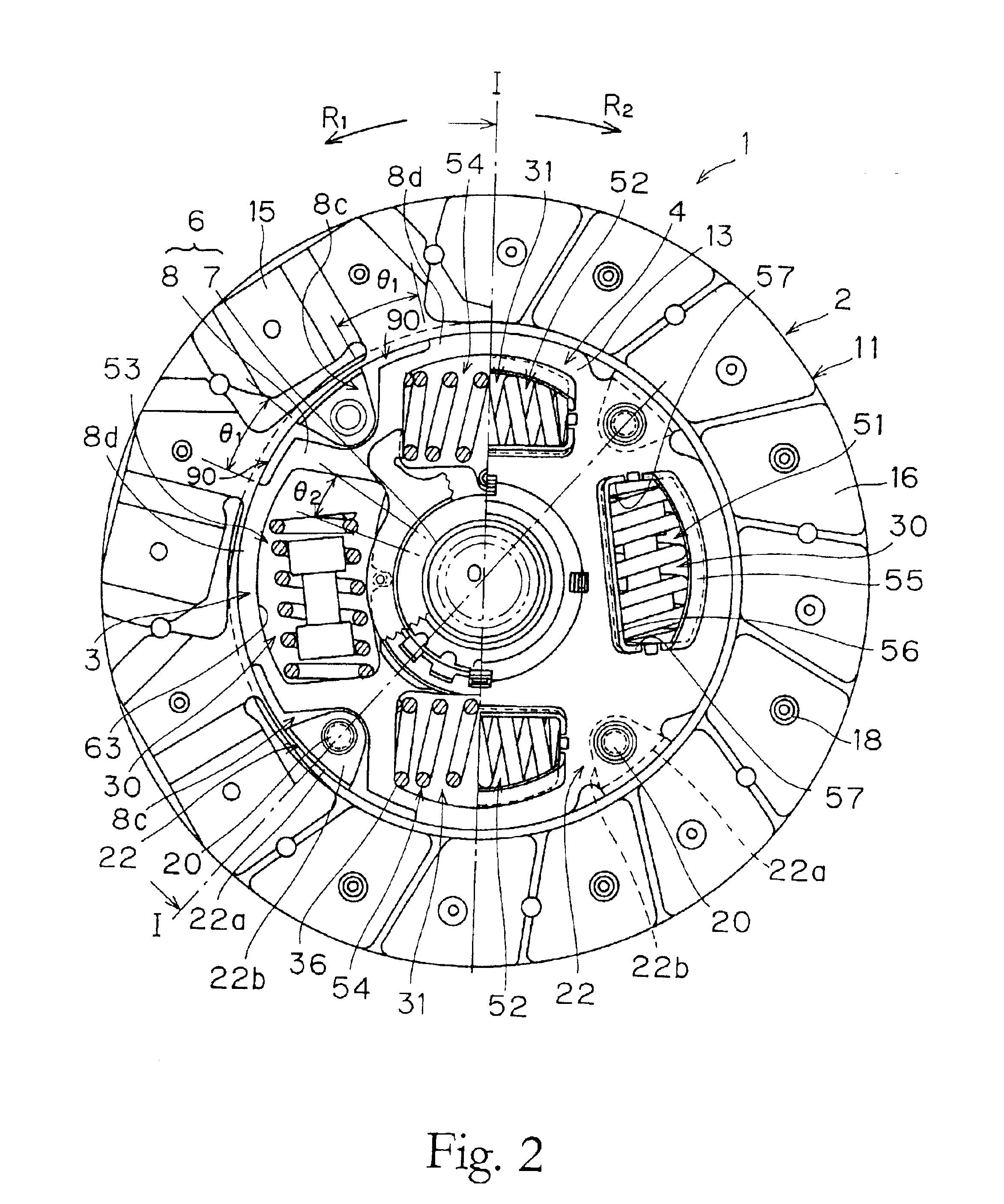Damper mechanism
a technology of adamant mechanism and a cylinder head, which is applied in the direction of friction lining, couplings, mechanical equipment, etc., can solve the problems of high hysteresis torque and achieve the effect of favored vibration damping performan
- Summary
- Abstract
- Description
- Claims
- Application Information
AI Technical Summary
Benefits of technology
Problems solved by technology
Method used
Image
Examples
Embodiment Construction
Selected embodiments of the present invention will now be explained with reference to the drawings. It will be apparent to those skilled in the art from this disclosure that the following description of the embodiments of the present invention is provided for illustration only, and not for the purpose of limiting the invention as defined by the appended claims and their equivalents.
FIG. 1 is a cross-sectional view of a clutch disk assembly 1 in accordance with a preferred embodiment of the present invention. FIG. 2 is an elevational view of the same. The clutch disk assembly 1 is a power transmission device used in a clutch device of a vehicle (particularly an FF vehicle). The clutch disk assembly 1 has a clutch function and a damper function. The clutch function is provided to connect and disconnect torque by engaging the clutch disk assembly 1 with and disengaging it from a flywheel (not shown). The damper function is provided to absorb and damp torque fluctuations received from t...
PUM
 Login to View More
Login to View More Abstract
Description
Claims
Application Information
 Login to View More
Login to View More - R&D
- Intellectual Property
- Life Sciences
- Materials
- Tech Scout
- Unparalleled Data Quality
- Higher Quality Content
- 60% Fewer Hallucinations
Browse by: Latest US Patents, China's latest patents, Technical Efficacy Thesaurus, Application Domain, Technology Topic, Popular Technical Reports.
© 2025 PatSnap. All rights reserved.Legal|Privacy policy|Modern Slavery Act Transparency Statement|Sitemap|About US| Contact US: help@patsnap.com



